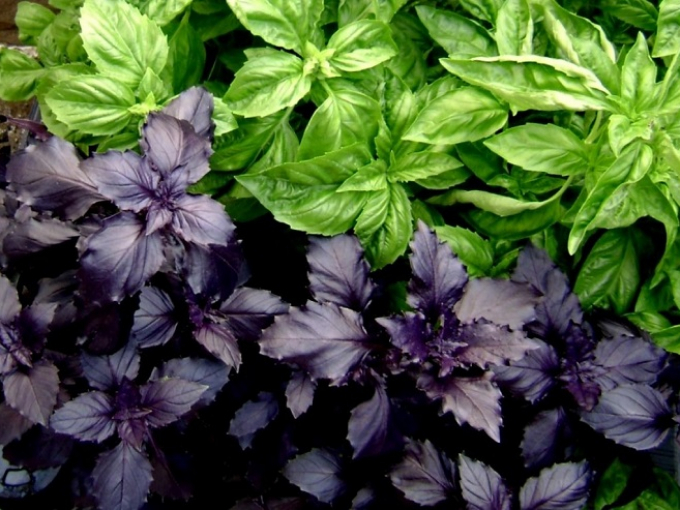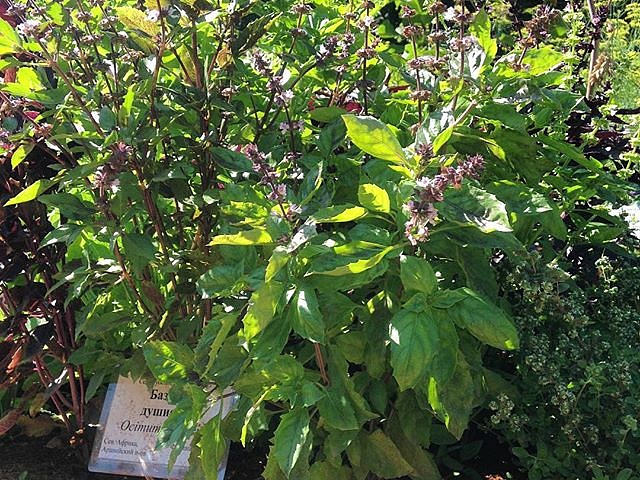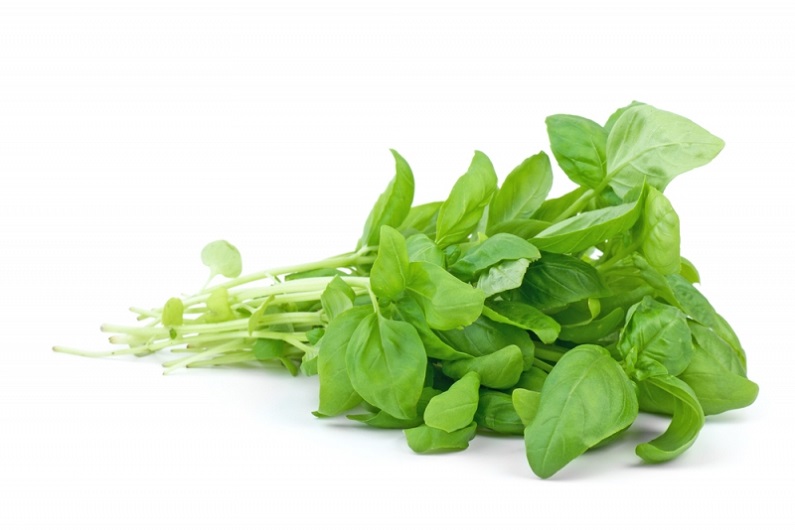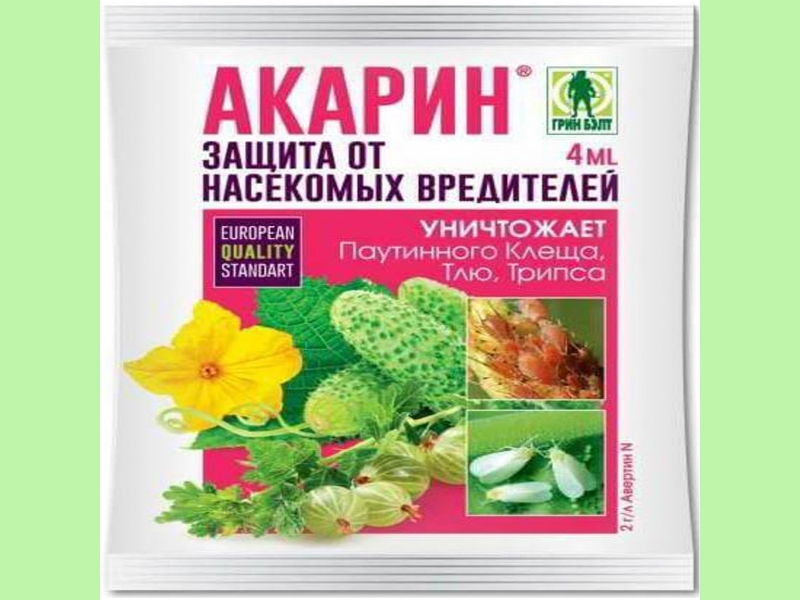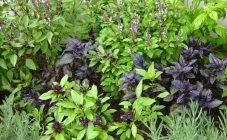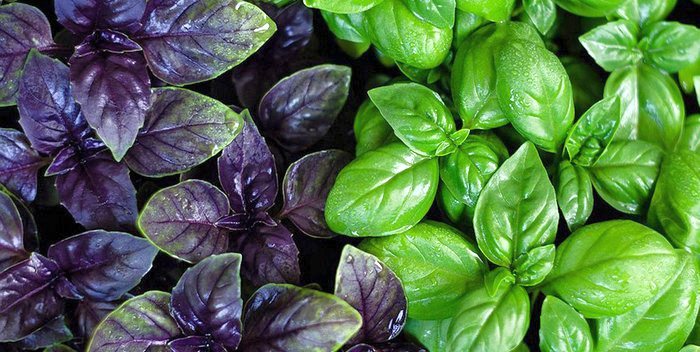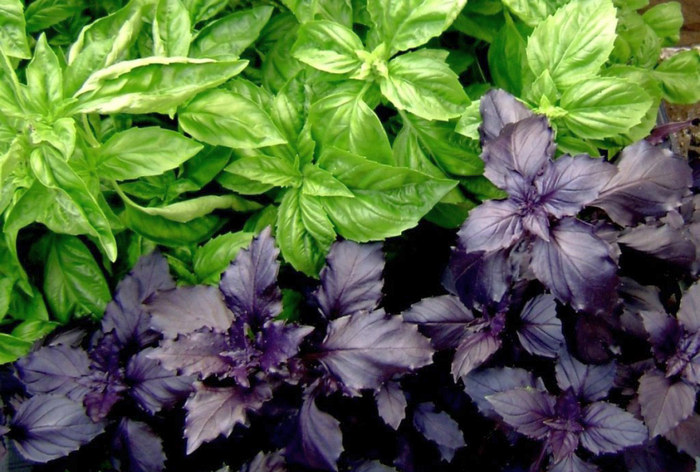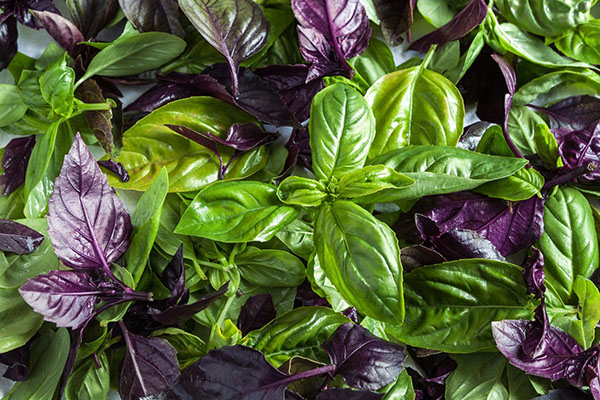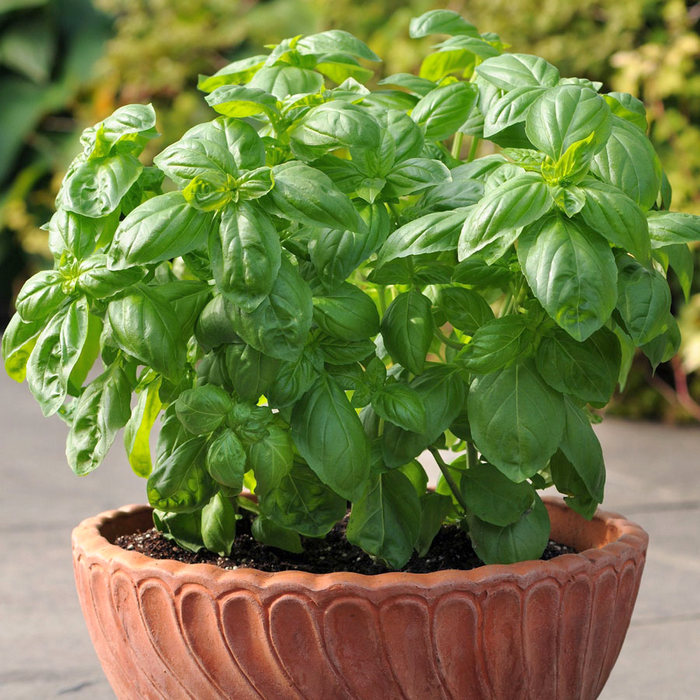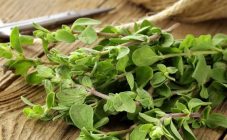Content:
Sweet basil (ordinary) is one of the most aromatic kitchen spices. Represents the Lamiaceae family. The Latin name is ocimum basilicum. This plant is grown by gardeners all over the world. Delicious seasoning is ideal for meat dishes, preparations. It is added to add astringency to desserts and cocktails. In addition, the herb is used for medicinal and cosmetic purposes.
Description
Basil what is it? What does basil look like? The plant is a short bush. The stem has four edges. In general, it is rounded, often pubescent. It stretches up to 35-55 cm. Many cuttings with large leaves. The stem of an adult plant is hardened, woody.
The shape of the leaves is elongated, oval-ovate. Rare teeth are present. The leaves are slightly curved, curled, pubescent. The tip is pointed. Pronounced veins. The cover, depending on the variety, may be slightly fuzzy. The length of one leaf can reach 3-8 cm. The colors characteristic of the leaves of the fragrant basil are emerald green, light green, dark green. Most often, the leaves are glossy. Another popular variety of this plant has purple color. It has a name similar to the color of the leaves. Recently, the purple basil variety Crimean, as well as the Robin Hood variety, have become famous.
Blooms for about 60 days. June or early July to late August. A flower halo of several inflorescences appears on the elongated tips of the stems. On them there are snow-white, less often with a lilac shade flowers. Each flower has two lips. The fruits are four-lobed. They represent four nuts. They contain small dark seeds. One gram contains about a thousand seeds.
The root system is close to the soil surface. It has many ramifications.
The taste of the spice is peppery, tart, with a pronounced bitterness. Many connoisseurs say that part of the taste is sweet. The aroma resembles allspice. There are also notes of clove, ginger.
It is noteworthy that fresh and dried basil differ in taste. The dried herb is often mistaken for curry.
Many are interested in the question "is basil cilantro?" The answer is no. These plants are both spices and give the food a rich flavor. But these are two different herbs. Cilantro looks like parsley. She has small dissected leaves, divided into lobes.
Where the spice grows
For the first time, sweet basil was seen in India. In nature, it can be seen in North Africa, Asia.
As a culture, it is grown all over the world. The plant is accustomed to different climatic conditions. Despite the fact that the homeland of basil is a warm country, now the cultivation of spices has spread to regions with cool summers. For example, in the Moscow region it is grown in vegetable gardens through seedlings. Seeds like to sprout in a warm room, and after 50-60 days, an open-air garden is prepared for the mature seedlings. The place should be sunny and calm.
Related species of sweet basil
Sweet basil (or ordinary, garden, camphor) is a type of the Basil genus. There are more than a hundred varieties of the plant. Fragrant can be called the most popular of the species of this genus.Common basil should not be confused with sacred, brown, purple, lemon, eugenol. They are relatives, but not the same plant. For example, holy basil (it may also be called holy) has shaggy leaves covered with fine delicate hairs. Its taste is reminiscent of cloves. Purple and brown have specific foliage colors. Lemon is not to be confused with other types due to its rich fresh lemon aroma. Eugenol basil is a very large pyramidal shrub. It grows up to 1.5 m.
Thanks to breeders, each of the plant varieties has many different varieties.
Common Basil Varieties
The plant has about fifty different varieties. The most famous are:
- Genovese;
- Mammoth;
- Magical Michael;
- Tone;
- Vegetable minx;
- Fragrant handsome;
- Gourmet.
The Genovese variety is especially loved by Italians. It is grown in sunny, warm Italy. The variety makes a delicious cold pesto sauce.
Mammoth has large, broad leaves. Spicy, spicy. Usually grows in warm regions. Suitable for growing on a windowsill in an apartment.
Magical Michael loves the sun, but it can be grown in regions with different climates. The peculiarity of the variety is its very fast growth. In just a month, it can stretch up to 40 cm. It has many emerald, aromatic and spicy leaves. The leaves are eaten fresh as a snack.
Basil Tonus is considered mid-season. 6 weeks after germination, it can already be cut. Leaves are medium in size, moderately spicy.
Basil Shalun is a small-leaved variety. Suitable for vegetable garden and home growing. The bush is very beautiful, spherical. Shalun basil is a vegetable variety. You can get 1.5 kg of spicy herbs from one square meter.
Fragrant beauty smells of cinnamon. A very aromatic herb. What is sweet-scented basil used for? Neat emerald leaves with a bluish-lilac hue are suitable for decorating dessert compositions, alcoholic and non-alcoholic cocktails. The herb can be used to add a noble flavor to sweet, meaty dishes. It can grow in regions with different climates.
The gourmet produces excellent greens within 1.5 months after the first shoots appear. It grows very quickly. Often grown in Central Russia. Suitable for seedling and seedling growing.
Basil is an annual or perennial plant
Common basil (styty soul) is an annual herb. To obtain fresh greens, there must be an annual sowing of seeds. Fortunately, seeds hatch very quickly. They can emerge in 3-6 days. Early varieties grow in just a month, medium early varieties - in 40-50 days. One-year-old sweet basil will not grow on the site in the second year if it is not first planted there. Many other varieties of basil belong to an annual culture: lemon, purple.
There is also perennial basil. Basil eugenol is ideal as this culture. Growing and caring for plants is practically the same. A perennial is dug up from the garden in the fall and transplanted into a pot. In winter, it can grow at home.
Culture properties
The culture has healing properties. The chemical composition is saturated. It contains:
- ü sodium;
- ü phosphorus;
- ü magnesium;
- ü potassium;
- ü selenium;
- ü copper;
- ü manganese;
- ü iron;
- ü zinc;
- ü vitamins A, PP, C, K, E;
- ü vitamins of group B;
- ü beta-carotene.
All these macronutrients, trace elements, vitamins are in such volumes and proportions, due to which the plant has healing properties. Ancient Indian healers who saved people from various diseases knew about the benefits of spicy grass. The popularity of this herb as a medicine has not waned over the years.
The fragrant basil plant is an antiseptic, antipyretic, diaphoretic, antispasmodic. Another property of spicy greens is bactericidal. It can normalize digestive processes, speed up the digestion of food. Helps with poisoning.
Fresh spice can be called a natural tranquilizer. After consuming basil, the general psychological state is normalized, anxiety and emotional stress go away. Bazilik has a positive effect on the nervous system.
What is basil used for? For example, basil infusion is prepared to calm down, relieve anxiety. Take a teaspoon of dry herb, brew it in a 500 ml jar with boiling water.
It can also be used against pain. Several leaves are frayed. The gruel is wrapped in gauze and applied to the temples, the back of the head.
The use of the plant is not limited to cooking and medicine. It has shown itself to be effective in cosmetology. The culture is able to restore the skin, rejuvenate, smooth, eliminate wrinkles. It has a beneficial effect on the cells in the subcutaneous layers.
Who is contraindicated spicy herb
Despite the beneficial properties of the culture, its use must be limited:
- For babies;
- For women in position;
- People after a heart attack;
- If there is a disease or problems with blood vessels, heart;
- If a person has poor blood clotting;
- With diabetes mellitus.
Cultural pests
Experienced gardeners know that sweet basil is a very healthy plant. The herb has strong immunity from pests. However, if the culture is not provided with the necessary care, aphids and field bugs can attack it.
Aphids pounce on a green bush, sucking out its juice. As a result, the leaves and stems are covered with a whitish or dark bloom. The leaves are folded. The plant dries up. Aphids are dangerous because they carry various dangerous diseases. A fungus develops in the secretions that the insect leaves.
The fight against aphids consists in processing the bush with garlic or potato broth. The procedure is performed several times every 10 days. You can pour the greens with ash broth. If there are a lot of aphids, it is allowed to use one of the insecticides: Akarin, Karbofos, Bankol.
Field bugs, similarly to aphids, suck the juice of greenery. In addition, the bug breeds offspring in the basilica. The larvae feed on leaves and stems. First, the plant on which the pest settled is covered with white spots, then dies off. It is recommended to fight in exactly the same ways as in the case of aphids.
Basil and oregano - one plant?
The question "are basil and oregano the same plant or not?" has an unambiguous answer - "no". Oregano is a well-known common oregano. Oregano and basil are not very similar in appearance. Oregano is a perennial. It has an erect stem. The stem is edged.
The leaves are light green, may have a silvery bloom. Rough to the touch. Plant height - about 40-80 cm blooms in July. Flowers are collected in large fluffy inflorescences. The common color of the petals is light pink. Oregano has a pleasant floral scent.
These two plants are not confused by chance. The fact is that basil has a different name - regan. It resembles oregano. Regan basil is called mainly in Azerbaijan.
Fragrant basil is so popular in different countries for good reason. This spice gives dishes a unique aroma and is used to decorate desserts. Its healing properties have helped more than one generation of people. The plant looks pretty. The bush can decorate not only the site, but also the home windowsill.
